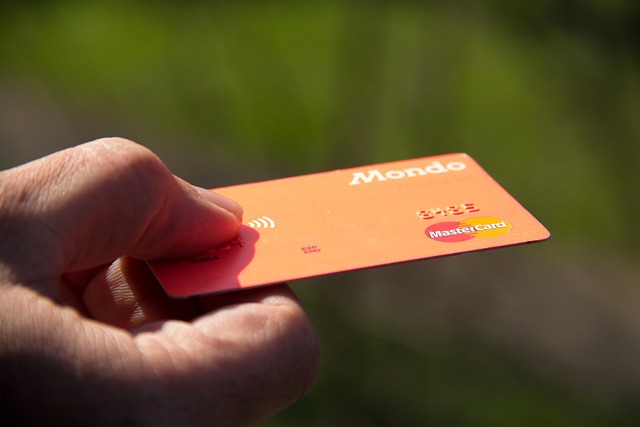By Michael Mallon, Director of Global Product Management, Accertify
In the digital age, subscription services have become ubiquitous, offering everything from streaming entertainment to meal kits delivered to your doorstep. This booming market is projected to reach a staggering $904 billion by 2026. However, beneath this growth lies a costly threat that is silently eroding profits: chargebacks.
Chargebacks, once a minor inconvenience for businesses, have evolved into a billion-dollar problem, hitting subscription-based services particularly hard. It is estimated that chargebacks cost the payments industry over $1 billion in 2023, a figure that continues to climb as the subscription economy expands. According to research conducted by Accertify and Javelin, 51% of merchants report that chargeback volumes are increasing.
The Perfect Storm: Fueling the Chargeback Surge
The allure of recurring revenue has led businesses across various sectors to adopt subscription models. From software and streaming services to physical products like razors or wine, the subscription economy has exploded in recent years. This growth was further accelerated by the COVID-19 pandemic, which pushed more consumers towards digital services and home deliveries.
However, with this rapid expansion comes a significant challenge: managing and mitigating chargebacks. These payment disputes, initiated by consumers through their banks, are becoming increasingly prevalent and are further eating into the profits of subscription-based businesses.
Several factors contribute to the rising tide of chargebacks in the subscription sector. Many banks now offer one-click dispute options within their mobile apps or online banking platforms, making it temptingly easy for consumers to initiate chargebacks without first attempting to resolve issues with merchants. This frictionless process has led to a surge in what industry experts call “first party misuse” – where consumers exploit the chargeback system, using services and then disputing charges despite receiving the promised goods or services.
Subscription fatigue is another contributing factor. As consumers sign up for multiple services, they may lose track of their recurring payments. This can lead to “surprise” charges and subsequent disputes. Adding to this problem, some businesses make it notoriously difficult to cancel subscriptions, pushing frustrated customers to resort to chargebacks as a way out.
Another challenge merchants face is to ensure that the recurring payment is processed adequately with the correct indicators required by the payment schemes. When this does not happen, they open themselves up to chargebacks and have very little recourse until they fix the gap. Most of the time, the problem is that they are not even told by their payment providers they have a gap and are expected to become self-taught experts. This is a losing battle.
The True Cost: Beyond the Obvious
While the direct cost of chargebacks is significant – typically ranging from $25 to $50 per dispute – the true impact on businesses goes far beyond these fees. Hidden costs include lost merchandise or services, time and labor spent on dispute resolution, potential damage to merchant-bank relationships, higher processing fees due to increased risk, and reputational damage and loss of customer trust.
Perhaps, most concerning is the long-term behavioral impact. Once consumers successfully dispute a charge, they are more likely to do so again in the future, creating a cycle of chargebacks that can be difficult for businesses to break.
Certain sectors within the subscription economy are particularly vulnerable to chargebacks. The proliferation of streaming options, for instance, has led to consumer confusion. With multiple services often owned by the same parent companies, customers may not recognize charges on their statements, leading to disputes.
In the food delivery and meal kit sector, as inflation impacts discretionary spending, some consumers are disputing charges, claiming issues with quality or delivery. The online gaming and gambling industry is also seeing an uptick in chargebacks as more states legalize these activities. Inexperienced users may not understand associated fees, such as cash advance charges for credit card deposits, leading to disputes.
Fighting Back: Strategies for the Future
To combat the rising tide of chargebacks, subscription-based businesses need to adopt a multi-faceted approach. Clear and frequent communication about upcoming charges can prevent “surprise” billing disputes. This includes using easily recognizable billing descriptors on credit card statements and notifying the consumer via email, text, or in the application itself at appropriate times throughout the account’s lifecycle.
Proactively informing customers about policies, billing practices, and the proper channels for dispute resolution can reduce unnecessary chargebacks. This should be done during the sign-up stage, and access to this information should be obvious to the consumer once enrolled in the service.
Making it easier for customers to cancel or pause subscriptions can reduce frustration-driven chargebacks. Providing accessible, responsive customer service can help resolve issues before they escalate to chargebacks and even help retain customers for the long term.
Lastly, utilizing advanced fraud detection systems can help identify and prevent fraudulent transactions before they result in chargebacks. Coupled with this, ensuring that you have a process to analyze your chargeback data can help identify patterns and high-risk customers, allowing for targeted prevention strategies within your portfolio.
As the subscription economy continues to grow, the challenge of managing chargebacks will only intensify. Businesses that fail to address this issue risk significant financial losses and damage to their reputation and customer relationships.
However, those that invest in customer-centric policies, clear communication, and robust fraud prevention measures stand to gain a competitive edge. By turning their focus to chargeback prevention and management, subscription services can protect their bottom line while building stronger, more trusting relationships with their customers.
In an increasingly digital world, the ability to – manage effectively chargebacks may well become a key differentiator between thriving subscription businesses and those that fall by the wayside. As the market races towards that $904 billion milestone, the companies that master this challenge will be best positioned to capture their share of this booming economy.
About the author
Michael Mallon is the Director of Global Product Management at Accertify, Inc., where he has spent over 14 years focusing on eCommerce payment disputes, fraud prevention, and operational efficiency in payment processing. With more than 25 years of experience in the financial services industry, Michael has played a key role in developing solutions for merchants, financial institutions, and card issuers and acquirers to manage chargebacks and streamline payment processes.
Related Articles

The New Frugality: How Inflation and Tariffs Are Reshaping Consumer Spending
One of the most telling shifts is how shoppers approach decision-making. Where convenience once dominated, consciousness now plays a larger role. People are researching more before making a purchase, comparing prices across multiple platforms, and questioning whether they really need the product in the first place.

Embracing new concepts vs the return to brick-and-mortar
Balancing the return to physical retail and the development of new technologies to enhance customer experience and drive operational efficiency for long-term success.
Enartis to Acquire Parsec in Winemaking and Retail Deal
The deal will bring Enartis and Parsec together to help wineries manage every part of production more easily and efficiently, from grape to bottle.

A Practical Guide to Retail AI Use Policies for Retailers and HQ Teams
AI can bring new opportunities for retailers, but this innovation must come with responsibility.


 for the latest news and job opportunities in retail tech
for the latest news and job opportunities in retail tech 